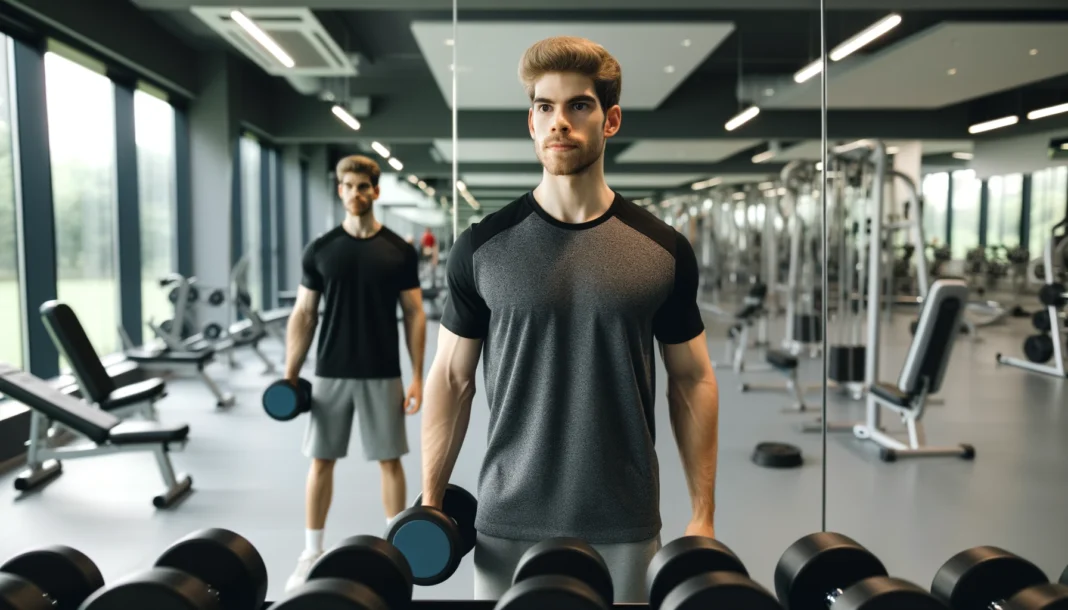Introduction: The Journey to a Healthier Lifestyle
Starting a fitness journey at the gym can be both exciting and overwhelming, especially for beginners. The idea of stepping into a new environment filled with machines, weights, and experienced gym-goers may feel intimidating. However, with proper guidance and a well-structured approach, anyone can successfully begin their gym experience and reap the numerous physical and mental benefits. This article provides a comprehensive, step-by-step guide on how to start going to the gym, covering everything from choosing the right gym to structuring workouts and maintaining motivation.
You may also like: The Ultimate Bodyweight Workout Routine for Full-Body Strength and Performance
Understanding the Basics: Choosing the Right Gym
The first step in starting a gym routine is selecting the right facility. Factors such as location, equipment availability, cleanliness, membership costs, and class offerings should be considered. A basic gym may suffice for beginners, but those looking for specialized training may prefer a facility with advanced equipment and personal training options. Gym atmosphere and staff friendliness also contribute to a positive workout experience.
Setting Realistic Goals and Expectations
Before diving into workouts, it is essential to set clear and achievable fitness goals. Whether the aim is weight loss, muscle gain, increased endurance, or overall health improvement, having specific objectives helps maintain motivation. Beginners should start with small, incremental goals to avoid discouragement and injury. Understanding that results take time and consistency is key to long-term success.
Overcoming Gym Anxiety: Building Confidence
Many beginners experience anxiety when going to the gym for the first time. This fear often stems from a lack of knowledge about gym equipment and exercise techniques. Researching basic gym exercises and watching tutorial videos can provide a foundational understanding. Additionally, bringing a workout partner or hiring a personal trainer can boost confidence. Most importantly, remembering that everyone at the gym started somewhere helps alleviate self-consciousness.

Structuring an Effective Workout Plan
A well-balanced workout plan is essential for maximizing results. Beginners should aim for a mix of cardiovascular exercises, strength training, and flexibility work. A typical week might include three to four days of exercise, incorporating gymnasium exercises like treadmill walking, resistance training, and stretching. Rest days are equally important for muscle recovery and overall well-being.
Learning Gym Etiquette and Safety Practices
Understanding gym etiquette ensures a positive experience for both beginners and seasoned gym-goers. Basic etiquette includes wiping down machines after use, re-racking weights, and being mindful of others’ space. Safety is another critical component; beginners should always start with light weights and gradually increase intensity. Proper warm-ups and cool-downs reduce the risk of injury and improve workout effectiveness.
Nutrition and Hydration: Supporting Fitness Goals
Exercise alone is not enough to achieve fitness goals; proper nutrition plays a crucial role. Consuming balanced meals with adequate protein, carbohydrates, and healthy fats supports muscle recovery and energy levels. Hydration is equally important, as dehydration can impair performance and cause fatigue. Pre- and post-workout nutrition strategies optimize results and aid in recovery.
Tracking Progress and Staying Motivated
Measuring progress is essential for staying motivated. Tracking weight, strength improvements, endurance levels, and overall well-being helps individuals see how far they have come. Many beginners benefit from keeping a fitness journal or using mobile apps to monitor progress. Setting new challenges and varying workouts prevents monotony and keeps motivation high.
Common Mistakes to Avoid
Many beginners make mistakes that hinder progress. These include neglecting proper warm-ups, lifting weights that are too heavy, skipping rest days, and comparing progress to others. Avoiding these pitfalls ensures a safer and more enjoyable gym experience. Consistency is more important than perfection; building a sustainable routine is key to long-term success.

Frequently Asked Questions (FAQ) on How to Start Going to the Gym
1. What is the best approach for gym beginners to build confidence before their first session? Building confidence when learning how to start gym sessions begins with setting small, achievable goals. Many first-time gym-goers feel intimidated, but preparing in advance can make the experience smoother. Researching basic gym etiquette, familiarizing yourself with the gym’s equipment online, and planning a workout routine beforehand can ease anxiety. Some people benefit from hiring a personal trainer for the first few sessions to establish good form and learn gymnasium exercise techniques. Gradually increasing intensity and frequency allows new gym-goers to build self-confidence while preventing burnout or injury.
2. How can beginners ensure they are using gym equipment correctly? Proper equipment usage is crucial for safety and efficiency when going to the gym. Beginners should start with instructional videos or ask a staff member for guidance on how to operate machines. Many gyms provide signage or diagrams detailing the correct usage of each machine, which can serve as a helpful reference. Practicing exercises with body weight before adding resistance can help build muscle memory. Joining an introductory gym class or working with a personal trainer can also enhance learning and reduce the risk of injury.
3. What is the ideal workout routine for someone new to the gym? For individuals learning how to start working out at the gym, a balanced routine focusing on strength training and cardiovascular exercise is key. Beginners should aim for two to three days of strength training per week, incorporating both upper and lower body exercises. Cardiovascular activities such as walking on a treadmill, cycling, or using an elliptical can complement resistance training. Rest days between workouts are essential for muscle recovery. Adjusting intensity and volume as endurance improves ensures steady progress without overexertion.
4. How can someone stay motivated to continue going to the gym? Consistency is often the biggest challenge when learning how to get started at the gym. Setting clear, realistic goals and tracking progress can boost motivation. Some people find that joining group fitness classes or having a workout partner increases accountability. Changing up workout routines regularly prevents boredom and keeps training sessions engaging. Rewards for milestones achieved, such as new workout gear or a planned rest day, can further encourage long-term commitment.
5. What are common mistakes gym beginners should avoid? Many beginners make the mistake of attempting advanced exercises without mastering the basics. Incorrect form can lead to injury, so proper technique should always take precedence over lifting heavier weights. Overtraining is another common mistake; allowing adequate rest and recovery prevents burnout. Neglecting warm-ups and cooldowns can lead to stiffness and decreased flexibility. Relying solely on machines and avoiding free weights limits functional strength development, so incorporating both into a routine is beneficial.
6. How should someone approach nutrition when starting a gym routine? A balanced diet plays a significant role in maximizing gym performance and recovery. Consuming sufficient protein supports muscle repair and growth, while carbohydrates provide the necessary energy for workouts. Hydration is equally important, as dehydration can negatively impact endurance and recovery. Meal timing can also influence performance, with many experts recommending a balanced pre-workout snack and post-workout meal. Beginners should avoid extreme dieting, instead focusing on sustainable, nutrient-dense food choices.
7. Is cardio necessary for someone looking to build muscle at the gym? While strength training is the primary driver of muscle growth, cardiovascular exercise offers additional benefits. A moderate amount of cardio can enhance endurance, improve heart health, and aid recovery. For individuals learning how to start gym workouts with a muscle-building focus, incorporating low-intensity cardio on rest days or post-strength training can be beneficial. Excessive cardio, however, may lead to muscle loss if not balanced properly. Finding the right combination of cardio and weight training ensures optimal fitness results.
8. How long does it take to see progress when starting a gym routine? Results vary based on factors like consistency, effort, nutrition, and genetics. Many beginners notice increased energy and improved endurance within the first few weeks of going to the gym. Strength gains often appear within four to six weeks, while visible changes in muscle tone can take longer. Tracking progress through measurements, strength levels, and how clothes fit can be more motivating than solely relying on the scale. Patience and persistence are key to achieving sustainable fitness improvements.
9. How can someone with a busy schedule fit gym sessions into their routine? Time management is crucial for maintaining a consistent workout schedule. Short, high-intensity workouts can be effective for individuals with limited time. Many gyms offer flexible hours, making it possible to fit a session in before work, during lunch breaks, or in the evening. Prioritizing workouts by scheduling them as important appointments can improve adherence. Choosing efficient exercises that target multiple muscle groups at once maximizes results within a shorter timeframe.
10. What is the best way to overcome gym anxiety and intimidation? Gym anxiety is common, especially for beginners unfamiliar with gymnasium exercise routines. Starting with off-peak hours when the gym is less crowded can help ease initial nervousness. Wearing comfortable, confidence-boosting workout attire and listening to music can create a more enjoyable experience. Focusing on personal progress rather than comparing oneself to others reduces unnecessary pressure. Over time, as comfort and familiarity grow, gym anxiety typically diminishes, making workouts more enjoyable and productive.

Conclusion: Committing to a Lifetime of Fitness
Starting a gym routine requires patience, persistence, and a willingness to learn. By choosing the right gym, setting realistic goals, learning proper techniques, and maintaining consistency, beginners can develop a successful fitness habit. Over time, gym workouts become a rewarding part of daily life, leading to improved physical health, mental clarity, and overall well-being.
fitness for beginners, strength training, gym motivation, healthy lifestyle, weight training, gym tips, beginner workout, personal training, fitness routine, exercise guide, gym success, fitness strategy, gym anxiety, workout plan, health and wellness, gym membership, weight loss journey, cardio training, muscle building, workout progress tracking.
Further Reading:
How to Start Going to the Gym: A Guide
Beginner’s Guide to Fitness: Starting Your Gym Journey
The Ultimate Beginner’s Guide: How To Start Going To The Gym
Important Note: The content provided by HealthXWire is for informational purposes only and should not be construed as medical advice, diagnosis, or treatment. While we strive for accuracy, the information presented on this site may not reflect the most current research or medical guidelines. Always seek the advice of your physician or other qualified health provider with any questions you may have regarding a medical condition. HealthXWire does not endorse, recommend, or guarantee the efficacy of any products, services, or treatments mentioned on this site. Users should not disregard professional medical advice or delay seeking it because of something they have read on HealthXWire. HealthXWire is not liable for any damages, loss, or injury arising from reliance on the information provided herein.



